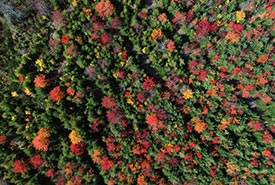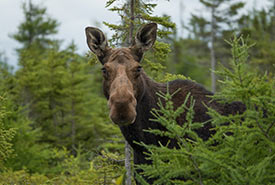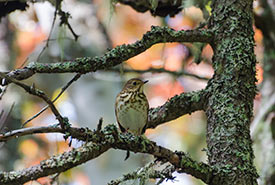Be thankful for nature, and nature will thank you

Upper Ohio, NS (Photo by Mike Dembeck)
The relationship between people and the natural world is mutually beneficial. By conserving land and water, we can ensure that wildlife habitats are protected, our environment is healthy and people can connect with nature for their well-being. When nature thrives, people thrive.
Every October, Atlantic Canadians are treated to a natural phenomenon, as our landscapes transform into a vivid wash of vibrant oranges, yellows and reds. Nature’s cues signal the changing of the season and remind us how fortunate we are to live in such a beautiful part of the country, surrounded by mixed forests, freshwater wetlands, heathlands, sandy dunes and coastlines as far as the eye can see.
The Nature Conservancy of Canada (NCC) is a registered charity and the country's largest national land conservation organization. NCC seeks solutions to the twin crises of rapid biodiversity loss and climate change through large-scale, permanent land conservation. We have been actively working to protect and care for Atlantic Canada’s natural areas since 1971.

Moose at Escuminac, NB (Photo by Courtney Cameron/NCC)
Some of you may have spent time in our nature reserves to view wildlife, take photos, kayak or simply recharge, reflect and enjoy time in nature. Scientific studies have proven that being in nature is good for us and provides both long- and short-term mental and physical health benefits.
In Atlantic Canada, NCC and our partners have conserved over 38,600 hectares of vulnerable habitat. There is still a long way to go to help Canada reach the goal of conserving 30 per cent of our country’s lands and waters by 2030. We actively seek new opportunities and ways to protect and conserve land that represents the full range of habitat and wildlife found in our region. We are grateful for the support we receive from individuals, businesses and organizations who have come together to protect and care for ecologically sensitive habitat, where plants and animals can thrive.

Swainson's thrush, Howe Bay, PEI (Photo by NCC)
At NCC we are thankful for Atlantic Canada’s diverse habitats, which provide us with important ecosystem services. Our coastal dunes, estuaries and salt marshes serve as protective buffers that shelter us from storm surges. Our wetlands store vast amounts of carbon while retaining excess water from spring melts and heavy rainfalls. Our rivers, streams and lakes provide communities with sources of water while tree roots absorb water and filter out pollutants and help prevent erosion and flooding. Our forests, the lungs of the Earth, absorb and turn carbon dioxide into the fresh air that we breathe. Trees also capture, store and convert carbon into nutrients that enrich our soil. Forests provide us with shelter and shade while, on a larger scale, they help keep the planet cool. When we protect and conserve healthy habitats, pollinators such as bees, flies, wasps, butterflies and many other species can carry out their crucial role of helping secure our food supply and production.
As we care for our landscapes, many of you have played a direct and impactful role by contributing your time and expertise as NCC property stewards and volunteering with marram grass planting, trail maintenance, tree planting, bird surveys, removing invasive species and clean-ups. We thank you and welcome your conservation efforts.
NCC is actively working to care for and protect additional land and water at the following natural areas throughout Atlantic Canada:
Nova Scotia
- West Head in Lockeport
- The Pugwash Estuary
- The Chignecto Isthmus
- Kespukwitk (Southwest Nova)
New Brunswick
- Wolastoq (Saint John) River Valley near Fredericton
- The Chignecto Isthmus
- Musquash Estuary Nature Reserve near Saint John
- Near St. Martins on the Bay of Fundy
- The Acadian Peninsula
Prince Edward Island
- Percival River
- Five Houses
- Haldimand River
Newfoundland and Labrador
- The Codroy Valley
For more information on how you can contribute toward protecting our vulnerable landscapes or by helping care for these conservation areas, contact us at supporter.services@natureconservancy.ca.
NCC is grateful for your support in giving back to nature.




